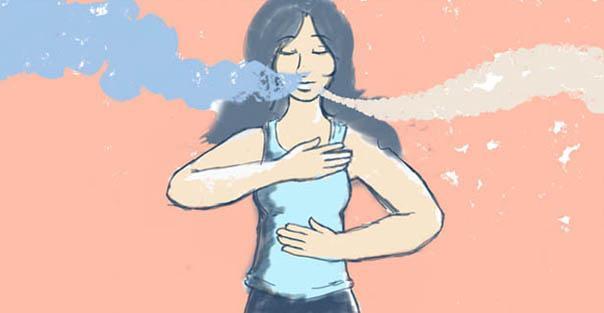A Breathing Technique for Asthma Relief
A Breathing Technique for Asthma Relief
While breathing training improves quality of life if you have asthma, it may or may not decrease the need for regular anti-inflammatory medication treatment with inhaled steroids and improve your asthma control.
Breathing training was once regular practice in asthma and other respiratory disorders, but effective asthma medications have caused the technique to fall out of mainstream asthma care.
Buteyko breathing training was developed by Ukrainian physician Konstantin P.
Buteyko in the 1960s. Dr. Buteyko believed that asthmatics chronically hyperventilate, or breathe too quickly, resulting in chronically low levels of carbon dioxide. In asthmatic patients, he believed, the low carbon dioxide levels lead to inflammation and bronchoconstriction. Dr. Buteyko believed that breathing training could lead to improvement in asthma control.
Buteyko breathing training involves controlling your breathing by decreasing both the volume of each breath and the number of breaths you take per minute. Through a series of exercises, you retrain how you breathe. Additionally, the technique places an importance on nasal breathing and relaxation methods.
While doctors may not receive much in the way of education in relation to breathing training and other alternative asthma therapies, more than 60 percent of asthma patients report using some sort of alternative asthma treatments.
In one study, researchers from the Department of General Practice and Primary Care at the University of Aberdeen in Aberdeen, UK performed a randomized controlled trial to determine if formal breathing training improves quality of life and actual asthma control. Respiratory therapists provided breathing training for one group of patients, while nurses provided standard asthma education to the other group.
The intervention consisted of specific abdominal (belly) and nasal breathing techniques. Participants were encouraged to practice the exercises for at least 10 minutes each day.
After six months, quality of life scores were significantly improved in the group performing breathing training exercises compared to the group receiving traditional asthma education. Additionally, measures of anxiety and depression were also decreased among the respiratory training group. However, while the breathing training was associated with slightly better reported control of asthma symptoms, measures of actual, objective asthma control — like peak expiratory flow rate — were not significantly different between the groups. Other studies, however, have shown some benefit.
While the study did not demonstrate a decreased need for asthma medication, breathing training may benefit patients whose asthma impairs their quality of life. Importantly, the intervention was relatively brief and differences persisted for six months without additional training.
So, what is the take-home message for you and your asthma? Breathing training may or may not decrease your need for medication, but it may significantly improve your ability to live with your asthma and decrease anxiety or depression related to asthma. Importantly, breathing exercises are not hard to learn, won’t cost you anything, and can be learned in a short time period. There are a number of different methods of breathing training that may be beneficial, such as yoga.
by Pat Bass For Very Well
Be the first to post a message!
